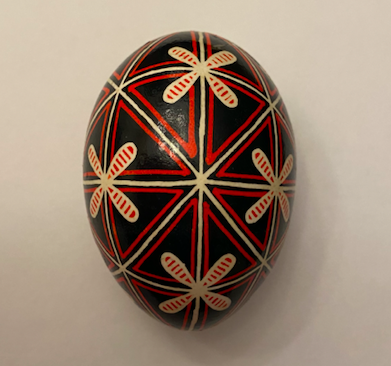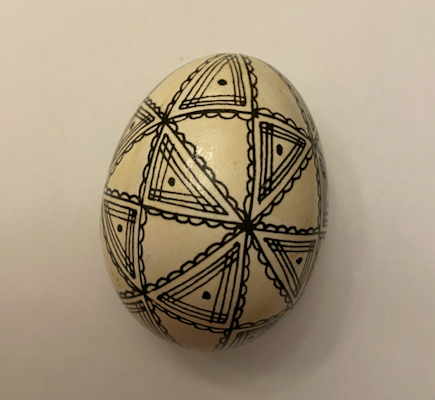Description of Informant
NM (49) is a Massachusetts native living in California. He commits to a regular exercise routine and owns/operates a metal decking supply firm. NM enjoys strategy games, world news/current events, and participates in a weekly chess match with friends. From 1980-1989 (his middle- and high-school years), NM lived in Merrimac, MA. Merrimac was a small town on the MA/NH border, approximately 10 miles west of the Atlantic Ocean.
—
Game
Relievio is a team-based hide-and-seek style game, where the first team, the “seekers,” try to catch all members of the second team, the “hiders.” If a seeker finds a hider, the chase begins. The seeker must grab hold of the hider and yell “Caught!” three times. If successful, the victim must go to a predefined waiting zone (“jail”). Once all hiders are jailed, the seekers win. The teams then switch roles and begin again.
There is a “jailbreak” rule, where if a “living” (i.e. not yet caught) member of the hiding team physically touches the jail and yells “Relievio!”, all jailed individuals are set free. Much of the game’s strategy (e.g. guards, sneaking to jail, faking being caught) stem from this mechanic.
Context of Use
Relievio was a common street/neighborhood game for the children of Merrimac, MA. The game was often played after nightfall, so as to augment the “thrill of the hunt.”
—
Context of Interview
The informant, NM, is met in his garden by the collector, BK, his nephew. They speak poolside.
Interview
BK: So what would kids in Merrimac, Massachusetts do?
NM: The biggest was a game called Relievio, which was a very popular neighborhood game. And our house was kind of a home base. Like yeah, central home base for the whole thing. We had a massive oak tree in our front yard. That was the jail. But yeah, basically, if you had, if you had eight people, you could have a pretty great, great game of Relievio. Four people would be just split up evenly. Four would stay at the tree, which was home base, or the jail. The other four would take off and hide and we’re talking– the neighborhood was the bounds, you know, everybody’s house neighbor, whether we knew them or not, were in-bounds. So about five or six houses. So I would say at least five acres worth of property. And then the other four would go out and seek. And, and usually, we do this at dawn or even night. I mean, some of the games were at day, but at night, it was a little bit more thrilling. Cuz nobody, you know, we’re still little kids, nobody loved hiding in the dark. *chuckles* But as soon as you found somebody, you know, the chase would begin. And the chaser would have to grab hold of the person and say “caught! caught! caught!” three times. You had to say “caught!” three times. And that person would then go to jail. So they’d be at the tree. And usually, one person would be guarding them. And the other three would still be seeking. But once someone got caught, it was the goal of the people who hadn’t been caught to touch the tree, say the word “Relievio,” and that would release anybody captured at the tree. So yeah, that’s where the strategy came. But you know if you had two people and you coordinated and there was only one person guarding the tree, that would be pretty easy release. So sometimes I would have two people guarding it.
NM: At some point, a couple of us got old enough to climb the tree. And we’re talking, like, when I was like 14 or 15 years old. Because this tree was six or seven feet in diameter, as far as the base, with no low limbs, and the first low limb was about 10 feet off the ground. The first limb to get your hands on was about two-foot diameter. So it was a, it was a massive tree. And with no easy branches, just had to hang on, you had to climb up the bark, hug the first limb, and then kind of shimmy your way around that first limb. And then once you’re on that first limb, you had a little bit of mobility around that first layer branches 10 feet up. But the trick was to sneak back to the tree while the seekers were still seeking. Climb the tree, so you’re in the jail so that nobody knew you were there. And then they start bringing in people as they’re caught. And then you’re sitting up in the tree, and they don’t see you and then you just announce “Relievio” and it completely would shock them. Yeah, we played hours and hours and hours of Relievio.
NM: That was not a game we knew about before I lived in Merrimac. Yeah, I mean, we didn’t have the number of the kids for that. But when I moved to Merrimac, there were a lot of us. There were 1, 2, 3, 4… 8 boys. All within four years of each other. And then yeah, whenever we had friends over, yeah, you could easily get to 10. Occasionally my father would play. I think my father and my father’s brother played once.
NM: Yeah, I mean, it’s there. There’s nothing like the thrill of getting chased in the dark. And basically generally knowing where there are dark places to hide. And just getting ahead, just enough to duck into them. But then, not being able to control your breath. Because you’re in the dark and then you’re super tired and breathing heavily and just trying to find a way not to breathe. So that they don’t hear it, because I’ll be walking right by you. Because they wouldn’t have thought you ducked into that dark, little space. Like, do you really want to go stick your head in some dark corner of the bushes? You usually didn’t. So it was only if you’re breathing that you’re gonna get caught. Yeah, that was a great game.
BK: What years did you live in Merrimac?
NM: In 1980. I think. And yeah, through high school. So 1989 when I moved. The summer of fifth grade we moved. So I must have been probably 11.
Collector’s Reflection
Relievio is an extremely well-documented game with international variations. It began in New York, where it was called “Ringolevio.” Relievio is the name of the Canadian variant, which found its way to Boston and Ireland— the former being in Massachusetts where NM played the game, and the latter being NM’s country of origin. I won’t spend time going into each of these versions here (annotations below).
One difference in NM’s version of the game, which has not been documented across any versions of Relievio, is the use of “Caught! Caught! Caught!” as the catching phrase. Documented “catch-phrases” are “Chain chain, double chain, no break away”, “Ringolevio, 1-2-3, 1-2-3, 1-2-3!”, “1-2-3 come with me, you’re my prisoner”, “1-2-3 caught by me, no Relievio rest” (this final version is that documented of Boston and its suburbs). Common among all is an obsession with threes; either the expression is constructed of three parts, contains a three-count, or, in the case of NM, is a thrice-repeated term.
Though NM mentions that the game can be played at any time, he emphasizes that nighttime or in-darkness are preferred. Other versions of this game do not mention a time preference, but it seems as though the majority of data collection was done in large cities. In these environments, children playing outdoors at night may have been forbidden or dangerous. In a safe suburb such as Merrimac, though, there was likely more openness. The associated thrill, then, developed the preference among the children.
—
For other versions and descriptions of Relievio, please see:
“Ring-a-levio.” Merriam-Webster.com Dictionary, Merriam-Webster, https://www.merriam-webster.com/dictionary/ring-a-levio. Accessed 25 Apr. 2021.
“Ring-a-Levio is a sophisticated cross between Tag and Hide-and-Seek.” Albert, David H. Dismantling the Inner School. Retrieved 25 April 2021.
NOTE: The Wikipedia article “Ringolevio” is expansive, but many contributions are uncited.


